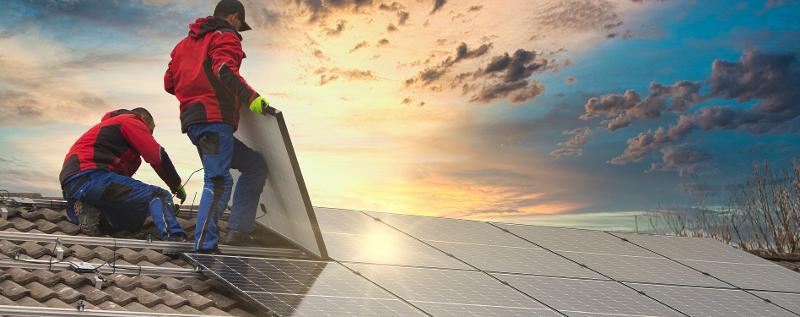In an era of environmental awareness, green building has emerged as a groundbreaking solution for sustainable living. From reducing energy consumption to enhancing indoor air quality, the benefits of green buildings are undeniable. As an experienced content writer specializing in environmental journalism, I am excited to present you with the most up-to-date information and program guidance on this revolutionary concept. Join me on this insightful journey to unlock the endless possibilities of green building and its positive impact on our environment.
Understanding Green Building: A Holistic Approach
Learn the fundamentals of green building and how it encompasses various aspects for a sustainable future.
In order to fully comprehend the concept of green building, it is important to understand its holistic approach. Green building goes beyond energy efficiency, incorporating elements such as water conservation, materials selection, and indoor environmental quality. By considering the entire lifecycle of a building - from design and construction to operation and demolition - green buildings strive to reduce environmental impact while enhancing occupant well-being.
Within the realm of green building, key areas are prioritized to ensure a well-rounded approach:
- Sustainable Site Development: This involves incorporating environmentally friendly practices such as landscaping and stormwater management to reduce negative impacts on the surrounding ecosystem.
- Water Efficiency: Water conservation techniques and efficient plumbing systems are implemented to minimize water usage and optimize its efficiency within the building.
- Energy Efficiency: The integration of energy-efficient systems, renewable energy sources, and effective insulation methods result in reduced energy consumption, lower utility costs, and a smaller carbon footprint.
- Materials Selection: By carefully sourcing sustainable materials, green buildings aim to minimize environmental damage caused by the extraction and production of construction materials.
- Indoor Environmental Quality (IEQ): Improved IEQ is achieved through techniques such as proper ventilation, use of non-toxic materials, and optimal lighting design, promoting a healthier and more productive indoor environment for occupants.
By encompassing these crucial aspects, green buildings reduce environmental impact while offering numerous benefits for both the planet and its inhabitants.
The Latest Advancements in Green Building Technologies
Explore innovative technologies and strategies that are reshaping the future of sustainable construction.
The field of green building is continuously evolving, with numerous advancements and technologies transforming the way we construct and operate buildings. Let's delve into some of the latest innovations:
Solar Roofing:
The integration of solar panels into roofing systems is gaining widespread popularity, allowing buildings to generate clean and renewable energy from the sun. In addition to reducing dependency on grid-supplied electricity, solar roofing systems can significantly decrease utility bills while lowering carbon emissions.
Smart Energy Management Systems:
These interconnected systems combine advanced sensors, data analytics, and automation to optimize energy usage. By monitoring energy consumption and identifying patterns, smart energy management systems can efficiently control lighting, heating, and cooling, resulting in energy savings and improved operational efficiency.
Green Infrastructure:
On-site green infrastructure, such as green roofs and living walls, helps mitigate stormwater runoff, improve air quality, and act as urban heat island reducers. By incorporating vegetation and natural elements into building designs, green infrastructure promotes biodiversity and enhances the overall sustainability of urban areas.
These are just a few examples of the cutting-edge technologies transforming the green building landscape. The continuous advancements in this field hold the promise of a greener, more sustainable future.
The Impact of Green Building on Environmental Conservation
Discover the profound implications of green building practices on environmental preservation and conservation.
The adoption of green building practices has undeniable positive implications for environmental conservation. Let's explore the profound impact of green buildings on our planet:
Reduced Carbon Emissions:
Green buildings prioritize energy efficiency, leveraging technology and strategies to minimize carbon emissions. The integration of renewable energy sources, efficient insulation, and smart systems helps reduce the reliance on fossil fuels, mitigating climate change and its detrimental effects.
Water Conservation:
Water scarcity is a pressing global issue, and green buildings address this concern through various water conservation techniques. From installing low-flow fixtures to harvesting rainwater for irrigation purposes, these practices help alleviate stress on dwindling water resources.
Preservation of Natural Resources:
The use of sustainable materials in green buildings minimizes resource depletion and environmental damage. Responsible sourcing, the implementation of recycled materials, and a focus on efficient use of resources contribute to preserving fragile ecosystems and reducing overall environmental footprint.
By embracing green building practices, we have the potential to safeguard our environment, reversing the negative impacts of traditional construction and paving the way for a more sustainable future.
Conclusion
Green building is an essential component of sustainable development, offering a holistic approach to construction that prioritizes environmental conservation and occupant well-being. By incorporating strategies such as energy efficiency, water conservation, and sustainable materials selection, green buildings help mitigate climate change, conserve natural resources, and create healthier living environments. The advancements in green building technologies continue to shape the future of sustainable construction, providing innovative solutions that contribute to a greener, more sustainable world.
FQA
What are the long-term benefits of green building?
Green building provides long-term benefits such as reduced operating costs, improved occupant health and comfort, and increased property value. By investing in green building practices, individuals and businesses can create sustainable spaces that not only benefit the environment but also offer economic advantages in the long run.
How does green building contribute to mitigating climate change?
Green building emphasizes energy efficiency, the use of renewable energy sources, and reduction in greenhouse gas emissions. By minimizing carbon footprint, green building practices play a crucial role in mitigating climate change, reducing reliance on non-renewable energy sources, and promoting sustainable lifestyles.
Are green buildings more expensive to construct?
While the initial construction costs of green buildings may be slightly higher, the long-term benefits far outweigh the upfront expenses. Green buildings have lower operating costs, reduced energy and water consumption, and increased durability. Additionally, the demand for sustainable buildings is on the rise, increasing property value and potential return on investment.

